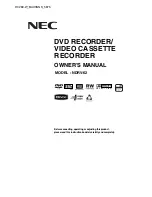
LSI Logic Confidential
9-10
Secondary Bitstream Interface
Copyright © 2001, 2002 by LSI Logic Corporation. All rights reserved.
GO
3
Microcode or the host processor sets GO to begin
Secondary Bitstream transfers.
Hardware clears the GO bit after the transfer is
completed.
Software clears the GO bit when BSRD is cleared,
flushes the remaining contents of the Secondary
Bitstream transfer FIFO to SDRAM, and terminates the
transfer.
Clearing the GO bit when BSRD is set (outgoing transfer)
discards the remaining contents of the Secondary
Bitstream FIFO and terminates the transfer. Because this
flush takes some time to complete, software should keep
polling the GO bit after writing zero until the GO bit reads
as zero to ensure that the last data has been written to
SDRAM.
Note:
The GO bit should be cleared, only if necessary, and read
as zero before software changes the value of BSRD or any
other Secondary Bitstream DMA register other than the
Stop Address register.
Clearing the GO bit by hardware or software resets the
packet framing. Software should set the stop address so
the number of bytes transferred in a DMA operation is a
multiple of SECPACKSIZE.
1 = Start SBP transfers
0 = Flush SBP FIFO and terminate transfer.
POL
2
If POL is set and WRREQ is clear, SBP_REQ and
SBP_ACK pins are active LOW; otherwise, they are
active HIGH.
If POL and WRREQ are set, the SBP_RD, SBP_REQ
and SBP_ACK pins are active LOW; otherwise, they are
active HIGH.
1 = SBP_RD/SBP_REQ/SBP_ACK are active HIGH
0 = SBP_REQ/SBP_ACK are active LOW
















































